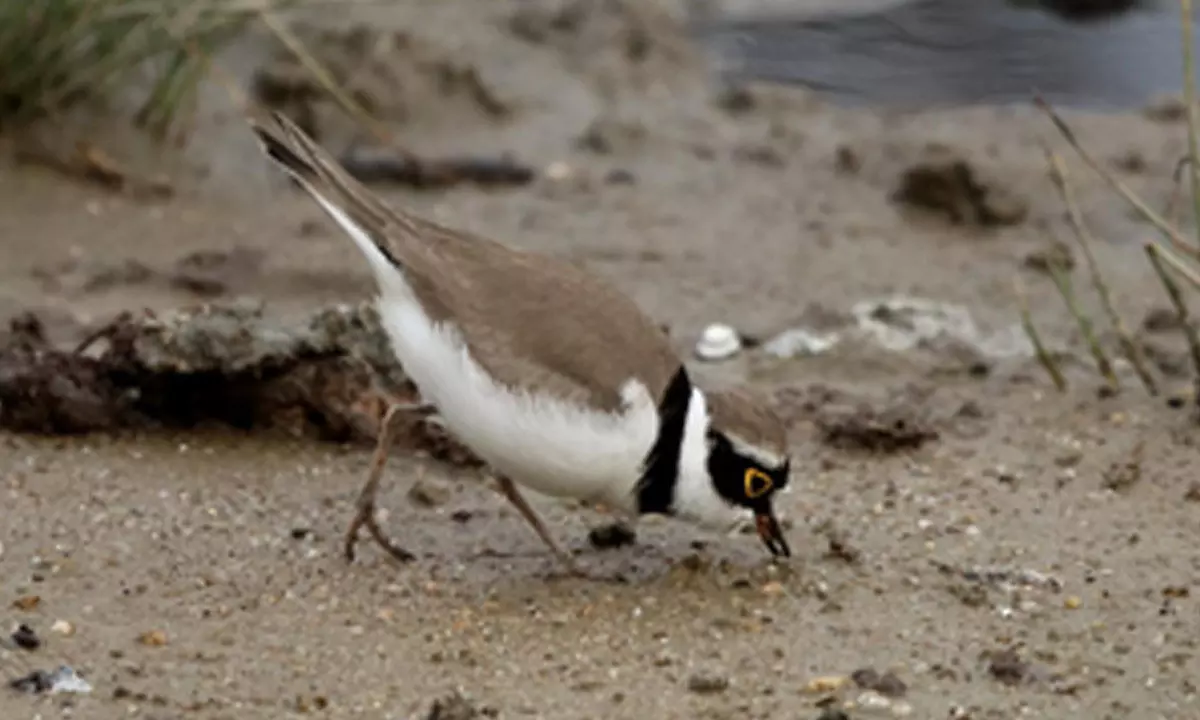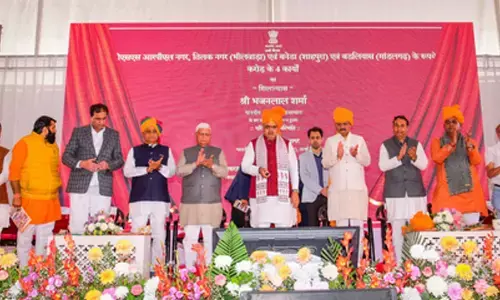Udaipur nests high bird diversity, not impacted by human-related variables: Researchers
Share :

Ornithologists have recorded 208 bird species, of which the largest diversity of 180 species was seen during winter in the urban landscape of Udaipur -- a beautiful jewel ringed by the gentle Aravalli Hills dotted with lakes in the desert state of Rajasthan.
Udaipur: Ornithologists have recorded 208 bird species, of which the largest diversity of 180 species was seen during winter in the urban landscape of Udaipur -- a beautiful jewel ringed by the gentle Aravalli Hills dotted with lakes in the desert state of Rajasthan.
In a first-of-its-kind urban ecology study, the researchers found out that in Udaipur, birds are not impacted most by human-related variables but by natural aspects that have a very strong positive association with birds.
These findings collectively show that birds in Indian cities such as Udaipur may have adequate habitat while also perhaps not being disturbed by people to allow a high diversity of birds within a city.
Udaipur is known for its tourism and the hospitality industry with more than a thousand hotels, resorts, spas and homestays, impacting the overall health of lakes and hills.
The study is part of the PhD thesis work of Kanishka Mehta, a student of Mohanlal Sukhadia University in Udaipur.
The advisors were Swati Kittur, a Geographic Information Systems and database specialist; Vijay Koli, assistant professor of Sukhadia University; and Gopi Sundar, the Co-chair of the IUCN SSC Storks, Ibis and Spoonbills Specialist Group.
Explaining the rationale behind the study, Sundar told IANS, "We were interested to see if and how Udaipur city served as a habitat for birds. Rather than focus on bits of the city like the lakes where the majority of bird watching takes place, we surveyed the full city for birds and how they used the city across the whole year."
How this study is unique? Sundar explains this is the first time a full small city has been systematically surveyed in India.
"Very few studies have covered full cities elsewhere in the world. This is also the first time all three seasons were covered to understand if and how birds associated with the three broad classes of variables in each of the three seasons. Such studies in urban areas, especially in the semi-arid tract of India, have been missing."
The study shows that birds have been impacted least by human-related variables.
Instead, natural aspects of the city such as tree diversity are the most influential on birds and largely impacted birds positively.
However, a few contradictions were found in the birds-habitat associations of Udaipur.
First, says researcher Kanishka Mehta, many cities show birds with different diets have different requirements (or niches), though few of the past studies cover the full city instead of focusing on green patches, etc.
Second, a study in Bangalore showed that migratory birds were able to fit into the already-diverse city by using far more specialised niches.
In Udaipur, there appears to be adequate habitat and resources for migratory birds to use in the city having similar niche measurements as the resident birds.
Thirdly, most urban studies have shown human-related variables to be the variables that most strongly impact birds, and usually negatively.
In Udaipur, birds have not been impacted most by human-related variables but by natural aspects that had a very strong positive association with birds.
These findings collectively show that birds in cities such as Udaipur may have adequate habitat while also perhaps not being disturbed by people to allow a high diversity of birds within a city.
The finding contradicts broad findings in urban ecology, which is biased towards cities in developed countries where habitat diversity may not be as diverse as seen in Udaipur.
"Our study area has the huge advantage of being nestled within the Aravalli mountains. While these mountains are currently under great strain due to illegal constructions of resorts, etc., their continued presence is likely the most important aspect that allows so many birds to live within the city," Mehta said.
The study discovered that resident birds change their niche measurements greatly in each season -- this is perhaps an adaptation that allows them to stay in the same place despite huge changes in conditions due to seasonal changes.
Few of the resident species had specialised niches and there were birds like the wire-tailed swallow (an insectivore), the shikra (a carnivore) and the Indian grey hornbill (an omnivore).
These findings showed Udaipur's bird diversity to contain a good mix of birds with different diets.
In most cities, many birds having omnivore and insectivore diets are disappearing, but such birds were common in Udaipur.
The work also showed many species such as the two species of fan-tailed flycatchers to be using cities to an extent that was not known previously.
In Udaipur, trees are the big heroes that appear to be sustaining much of the diverse bird communities.
Additionally, the high diversity of habitats such as grasslands, wetlands and scrublands in Udaipur are also critical for bird diversity.
Planning should ensure the conservation of all of these habitats rather than blindly increasing green cover only by tree planting.
More broadly, the study shows that Indian cities may not have the same characteristics as cities in developed countries.
The researchers discovered a good population of the Egyptian vulture that is thought to be declining steeply.
The study suggests that city planning should move away from one single design for all cities and become more flexible to be able to incorporate the needs of individual cities.


















